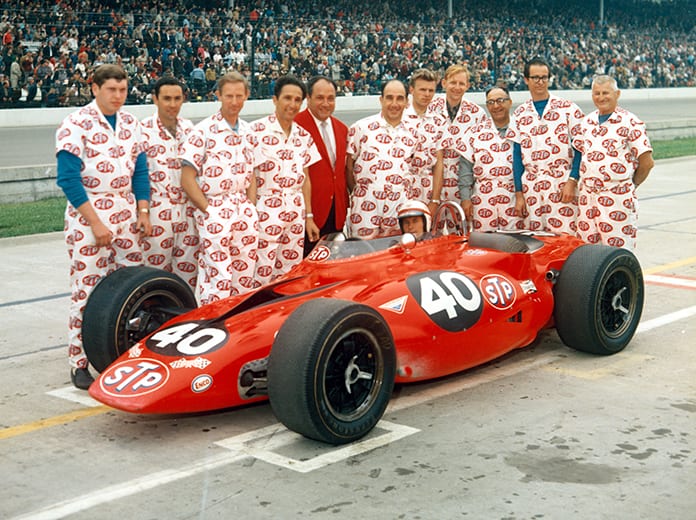On March 16, 1967, Parnelli Jones drove what was described as “the nation’s first space-age racing car” when he put Andy Granatelli’s radical turbine-powered racer through its initial shakedown runs at Phoenix Int’l Raceway.
Jones lapped the one-mile Arizona oval at over 120 mph, faster than the track record, and said the car, identified as the STP Paxton, was so quiet he could hear the gearbox noise over the engine.
“It’s so quiet that you don’t have to worry about looking behind you, you can hear your pursuers coming,” said the 1963 Indianapolis 500 winner.
Granatelli, president of the STP Division of Studebaker Corp., said the turbine engine, a small 260-pound Pratt & Whitney aircraft power plant, was rated at 550 horsepower.
“It has torque characteristics that are unique,” Granatelli explained. “It will beat a piston-engine car on acceleration, both from a standing start and out of the treacherous corners at Indianapolis.
“From a standstill, in stall condition, it produces 1,000 foot-pounds of torque, enough to tear the axles out of the car if the driver wanted,” Granatelli added.
Granatelli praised the car as the safest racing machine in history and noted that the turbine engine could run on any combustible liquid such as perfume, alcohol, kerosene or gasoline.
According to Granatelli, the bright orange race car took three years to design and build. It was just over two feet in overall height, rode a mere three inches off the track and tipped the scales at 1,845 pounds in race-ready condition.
Handling was improved by a four-wheel-drive system that utilized the Paxton adaptation of the British Ferguson system, splitting drive torque between the front and rear wheels.
The driver and the slender turbine engine were located side-by-side with a boxed aluminum spine running between them. The car carried a self-starter system and had no clutch or gears to shift as the engine acted as a torque converter.
Much to the delight of the flamboyant Granatelli, the controversial turbine-powered car dominated the headlines throughout the month of May at Indianapolis.
The STP team worked out what Jones described as several “minor problems” before the Torrance, Calif., veteran qualified at an average speed of 166.075 mph to earn the sixth-starting spot for the 51st Indianapolis 500.
Then, in the race, Jones assumed command on the first lap, was never worse than third and had a 52-second lead over A.J. Foyt when a $6 bearing in the gearbox failed just three laps from the checkered flag.
